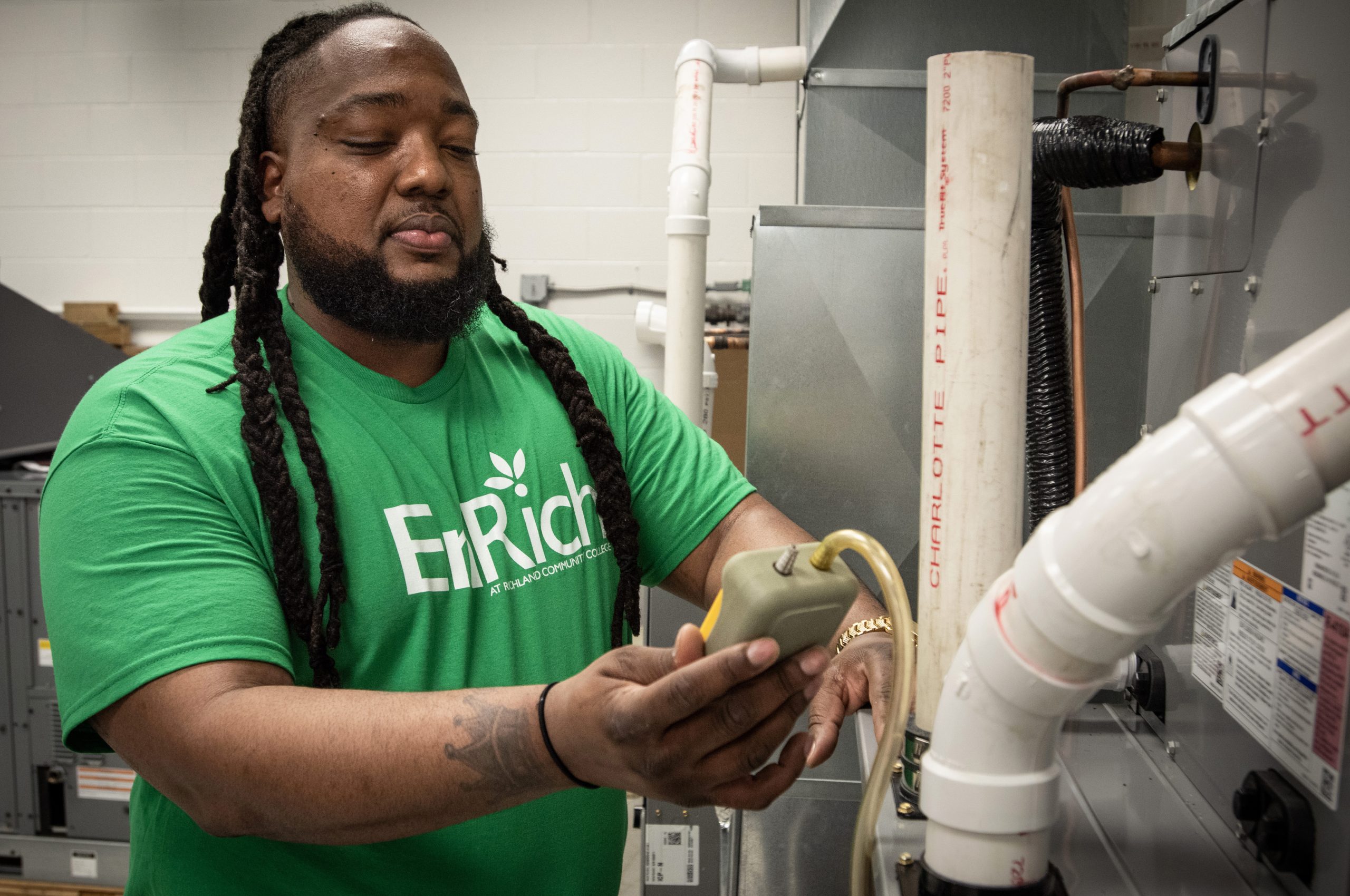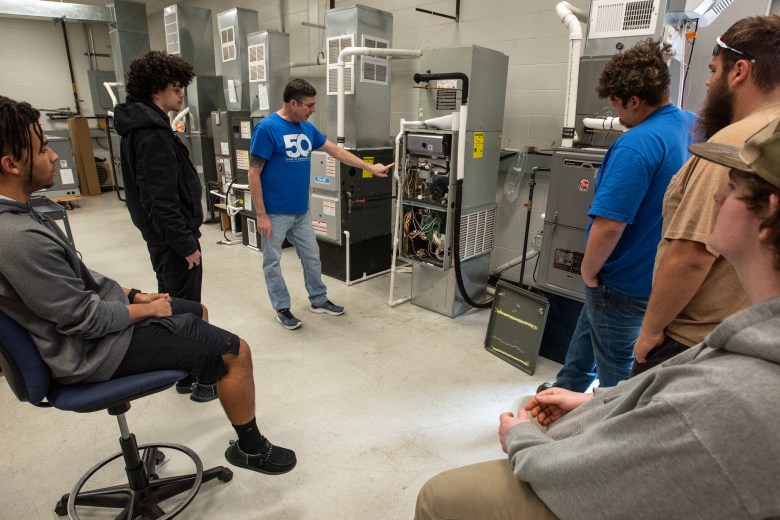Community colleges secured a massive legislative win earlier this month after more than a decade of advocacy. Workforce Pell, at long last, is en route to become a reality.
The One Big Beautiful Bill Act, signed into law July 4, extends Pell Grants to low-income students enrolled in eligible short-term programs, between eight and 15 weeks long. The policy shift is expected to put money in the pockets of hundreds of thousands of students per year to help them afford these quicker, increasingly popular programs—and bring an influx of funds to the institutions that offer them.
But realizing those gains will take some time, and with the policy scheduled to get off the ground next summer, some experts are worried a year won’t be long enough to parse the program’s details and ensure a smooth rollout.
Lawmakers in Congress and colleges have been working toward some form of workforce Pell since former senator Mary Landrieu of Louisiana pushed it forward as a part of the JOBS Act in 2014.
Since then, multiple attempts to enact the Pell expansion have failed even as the idea gained more bipartisan support. And for a moment in late June, workforce Pell seemed dead in the water when a nonpartisan Senate official, known as the parliamentarian, claimed it violated the rules of the Senate’s reconciliation process. Senators ultimately kept it in their version of the bill but limited the new Pell funds to accredited providers, appeasing the parliamentarian.
“We’re very thankful to the persistence of our champions in Congress on this legislation from both parties in both chambers, for the commitment they made to this legislation,” said David Baime, senior vice president of government relations at the American Association of Community Colleges, noting that while the bill was partisan, support for this provision has been “bipartisan all down the line.”
Community college leaders are “extremely enthusiastic” about the policy change after the immense “political effort that’s gone into this,” he added. “We consistently hear reports from our campuses about the importance of finding financing sources for low-income students to participate in these programs.”
Others, however, feel trepidation, as workforce Pell is on the precipice.
Wesley Whistle, project director for student success and affordability at New America, a liberal think tank, said for-profit colleges and online program managers, which set up short-term online programs for community colleges and other institutions, have also been eagerly awaiting the policy shift. Despite safeguards built into the legislation, such as job-placement rates, he worries students will still be lured into subpar programs at for-profits or slapdash, mass-produced online programs also eligible for the funds.
“I hope I’m wrong,” he said. “We’re talking about our most vulnerable students.”
Despite the bill’s passage, debates over workforce Pell are hardly over. Now, the hard work of planning for implementation begins.
What Happens Next
Workforce Pell is slated to take effect next July. But for that to happen, numerous details need to be hashed out by the U.S. Department of Education, states and program providers in the coming months.
Under the legislation, short-term programs need to meet a set of standards to be eligible for Pell money. And the task of making sure programs meet the qualifications is divvied up between states and the federal government.
The Education Department is responsible for checking that programs have existed for at least a year, boast completion and job-placement rates of at least 70 percent, and charge tuitions below graduates’ median “value-added earnings,” or the degree to which their income exceeds 150 percent of the federal poverty line three years out of the program.
State governors must ensure short-term programs prepare students for high-skill, high-wage or in-demand jobs. The resulting credentials also must be “stackable and portable across more than one employer,” unless preparing students for jobs with just one recognized credential. Credentials need to count toward academic credit for a certificate or degree program, as well.
Still, many questions linger about how workforce Pell will operate—likely to be answered through negotiated rule making, a lengthy process by which the Education Department creates rules and regulations by convening and listening to key stakeholders and experts, as well as public comment.
“There isn’t a lot of meat on the bones of the outline of what implementation would look like,” said Katie Spiker, chief of federal affairs for the National Skills Coalition, a research and advocacy organization focused on workforce training. “A whole lot of decisions and next steps … that will ultimately decide how impactful and effectively short-term Pell rolls out are still left to be determined.”
For example, some states already have quality frameworks in place for short-term programs and have spent more than $5 billion subsidizing these programs; it’s unclear how federal workforce Pell will work alongside these existing state-level initiatives. The legislation also doesn’t say who’s involved in deciding how “high-skill, high-wage or in-demand” jobs are defined. Spiker hopes those decisions draw on input from business leaders, education providers and state workforce agencies to make “public workforce and education systems better aligned.”
Whistle agreed some of the guardrails need ironing out. He was heartened to see a tuition limit based on graduates’ salaries—a new addition since earlier versions of the policy—but he finds aspects of the requirement murky. For example, bachelor’s degree holders qualify for workforce Pell under the law, so he worries their higher salaries could throw off the metric, intended to ensure tuitions are reasonable relative to what graduates will earn. The measure is also based on graduates’ earnings three years down the line, raising questions about how to ensure programs younger than three years don’t rip students off, he said.
Colleges’ To-Do List
As the department works through the policymaking process, colleges will also have their own work to do to get workforce Pell ready.
Higher ed institutions that want to participate will need to collect the data to prove they meet eligibility metrics, said Jennifer Stiddard, senior director of government relations at Jobs for the Future, an organization focused on the intersection between education and the workforce. If they don’t have that data, they’ll need to build up the reporting infrastructure.
In addition to measuring completion and job-placement rates, “do they think they have the data to prove a program is in demand?” Stiddard said. “Are they going to be able to demonstrate that the program articulates for credit?”
She expects community college systems in some states will be more ready than others to answer those questions, based on their states’ existing investments in short-term programs. For example, Virginia community colleges already have outcomes data on hand because of the FastForward program, which offers short-term training for jobs locally in high demand, with the state covering much of the cost. Institutions in other states, like Indiana, Iowa, Louisiana, Michigan, North Carolina and Texas, may have a head start, as well, she said. And some colleges that are further behind could decide it’s not worth it.
Baime, of AACC, said the association plans “to work as closely as we can with the administration to ensure that institutions are able to make their programs eligible as soon as possible.”
Among community college leaders, “the overwhelming feeling, of course, is positive,” he added, “but there are issues of implementation that need to be ironed out sometime hopefully before next July 1 so we can get this program up and running.”
An ‘Aggressive’ Timeline
Some experts guffawed at the yearlong timeline set for implementing workforce Pell.
Karishma Merchant, associate vice president of policy and advocacy at Jobs for the Future, called the July 2026 deadline “aggressive” but “possible” if the department gets started immediately. (Workforce Pell is just one item on the department’s task list for the next year, and experts are skeptical that the agency can get all the work done.)
Even if the process could be done in a year, Spiker believes it shouldn’t be. She said a year doesn’t seem like an “effective and reasonable” amount of time to solicit feedback from different stakeholders and disentangle how the program aligns with the patchwork of existing state investments in short-term training.
“We will be encouraging the department and states to take the time to be able to do a successful implementation that enables short-term Pell to grow over time and to serve more students and more workers, instead of pushing just to meet a relatively arbitrary timeline,” Spiker said.
She emphasized that the process comes on the heels of drastic staff cuts at the Education Department and a larger plan to dismantle the agency, which so far includes shifting career and technical education and adult basic education programs to the Department of Labor.
These changes are “taxing already on the agency,” she said, “and then to be spearheading an implementation simultaneous with all of those huge shifts … just makes the path forward even more difficult.”












